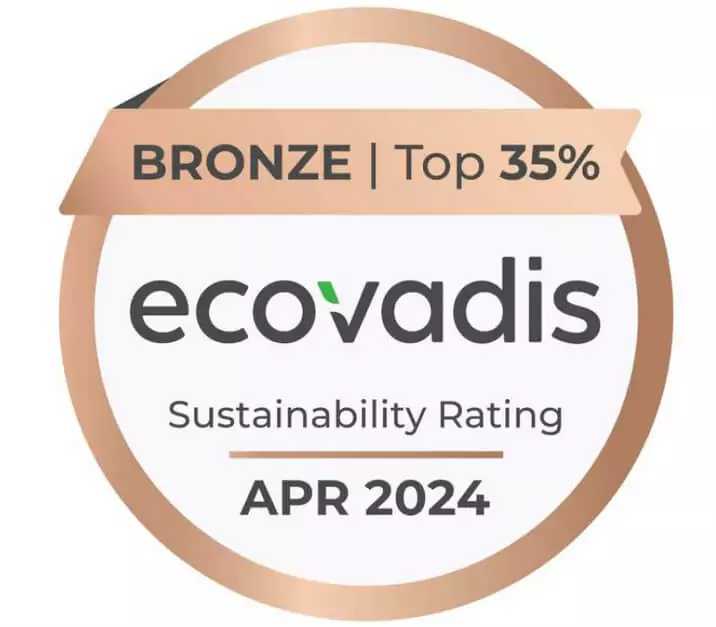How to Maximize the Lifespan of Lithium Ion Automotive Batteries
 The longevity of lithium ion automotive batteries is a crucial factor in the performance and sustainability of electric vehicles (EVs). As the automotive industry transitions towards electrification, understanding the challenges and strategies related to the lifespan of these batteries becomes imperative.
According to a recent report by the International Energy Agency (IEA), the demand for lithium ion automotive batteries is expected to surge, with production projected to reach 2,000 GWh annually by 2030. However, issues such as thermal stability, cycling life, and capacity fade pose significant risks to their longevity.
The automotive sector must prioritize solutions that not only enhance the durability of lithium ion automotive batteries but also minimize environmental impacts throughout their lifecycle. By addressing common problems associated with battery degradation, manufacturers and consumers alike can maximize the effectiveness and lifespan of these essential components in the evolving landscape of electric mobility.
The longevity of lithium ion automotive batteries is a crucial factor in the performance and sustainability of electric vehicles (EVs). As the automotive industry transitions towards electrification, understanding the challenges and strategies related to the lifespan of these batteries becomes imperative.
According to a recent report by the International Energy Agency (IEA), the demand for lithium ion automotive batteries is expected to surge, with production projected to reach 2,000 GWh annually by 2030. However, issues such as thermal stability, cycling life, and capacity fade pose significant risks to their longevity.
The automotive sector must prioritize solutions that not only enhance the durability of lithium ion automotive batteries but also minimize environmental impacts throughout their lifecycle. By addressing common problems associated with battery degradation, manufacturers and consumers alike can maximize the effectiveness and lifespan of these essential components in the evolving landscape of electric mobility.
Maximizing Battery Lifespan through Optimal Charging Practices and Techniques
To maximize the lifespan of lithium-ion automotive batteries, optimal charging practices play a critical role. Firstly, it’s essential to avoid letting the battery discharge to extremely low levels. Keeping the battery’s state of charge between 20% and 80% helps to reduce stress on the cells, which can extend overall battery life. Fast charging may be convenient, but frequent use of rapid chargers should be tempered; they generate excess heat and increase the risk of battery degradation. Instead, aim for slower, more consistent charging whenever possible.

Moreover, temperature management is a vital aspect to consider. Lithium-ion batteries perform best when kept within a moderate temperature range. Excessive heat can accelerate chemical reactions inside the battery, leading to reduced efficiency and longevity. When charging your vehicle, avoid direct sunlight or hot environments. Utilizing thermal management systems, if available, can be an effective strategy to maintain optimal battery conditions. By incorporating these charging techniques into your routine, you can significantly enhance the lifespan and performance of your lithium-ion automotive battery.
The Impact of Temperature on Lithium-Ion Battery Health and Longevity
Temperature plays a crucial role in determining the health and longevity of lithium-ion batteries used in automotive applications. High temperatures can accelerate the degradation of battery components, leading to reduced capacity and shorter lifespan. Conversely, extremely low temperatures can impair the battery's ability to deliver power effectively. Thus, managing temperature is key to maximizing your battery's lifespan.
To protect your battery from temperature extremes, park in shaded or temperature-controlled environments whenever possible. If parking outside in hot weather is unavoidable, consider using reflective sunshades to keep your vehicle cooler. Additionally, it’s beneficial to avoid charging your battery with a high state of charge in excessively hot conditions; try to keep charging sessions moderate to ensure optimal performance over time.
Another tip is to monitor battery performance during temperature fluctuations. If you live in an area with extreme seasonal changes, use thermal management systems installed in many modern electric vehicles to regulate battery temperature. This can help maintain a stable operating temperature, further enhancing your battery's health and longevity. By implementing these practices, you can significantly extend the lifespan of your lithium-ion automotive batteries.
Understanding Battery Management Systems: Enhancing Performance and Durability
Understanding Battery Management Systems (BMS) is crucial for enhancing the performance and durability of lithium-ion automotive batteries. A well-designed BMS monitors various parameters such as voltage, current, temperature, and state of charge, ensuring that each cell within the battery pack operates within safe limits. According to a recent report by the International Energy Agency (IEA), proper management can extend the lifecycle of lithium-ion batteries by up to 30%, significantly reducing the frequency and cost of replacements.
In addition to extending life, an effective BMS can optimize battery performance by enabling features such as cell balancing and thermal management. Research from the US Department of Energy indicates that temperature control can prevent thermal runaway, a leading cause of battery failure. By maintaining the battery within the ideal operating temperature range (typically between 20°C to 25°C), manufacturers can improve not only the safety but also the efficiency of electric vehicles, enhancing energy recovery and maximizing range. Ultimately, investing in advanced BMS technology is a critical step for automotive manufacturers aiming to maintain competitive advantage in the rapidly evolving electric vehicle market.

Exploring Battery Chemistry Alternatives: Beyond Traditional Lithium-Ion Solutions
As the reliance on lithium-ion batteries continues to grow, so too does the search for viable alternatives that can alleviate some of the environmental and efficiency challenges associated with traditional lithium technologies. Among the most promising contenders are solid-state batteries and sodium-ion batteries. Solid-state technology promises to enhance energy density while improving safety, reducing the risk of fire hazards that are problematic with liquid electrolytes. Meanwhile, sodium-ion batteries present a compelling solution, particularly due to sodium's abundance and lower ecological footprint compared to lithium extraction processes.
Another innovative approach gaining traction is the development of proton batteries, which utilize organic materials to store protons. This novel technology not only aims to deliver a more sustainable option but also addresses some of the recycling challenges faced by conventional lithium batteries. As researchers and institutions invest heavily in these emerging technologies—such as a recent substantial funding initiative—there is hope for a future where diverse battery solutions contribute to a more sustainable energy landscape, ultimately powering electric vehicles and renewable energy systems more effectively and responsibly.
How to Maximize the Lifespan of Lithium Ion Automotive Batteries - Exploring Battery Chemistry Alternatives: Beyond Traditional Lithium-Ion Solutions
| Battery Type |
Cycle Life (Charges) |
Energy Density (Wh/kg) |
Cost ($/kWh) |
Environmental Impact |
| Lithium Nickel Manganese Cobalt (NMC) |
500-1500 |
200-250 |
150-250 |
Moderate |
| Lithium Iron Phosphate (LFP) |
2000-4000 |
90-160 |
100-150 |
Low |
| Solid-State Lithium |
1000-3000 |
250-400 |
200-300 |
Moderate |
| Sodium-Ion |
2000-3000 |
100-150 |
50-100 |
Very Low |
| Lithium Sulfur |
300-800 |
300-500 |
150-200 |
Moderate |
Regular Maintenance and Monitoring: Key Practices for Prolonging Battery Life
To maximize the lifespan of lithium-ion automotive batteries, regular maintenance and monitoring are essential practices. According to a report by the Electric Power Research Institute, proper care can extend battery life by up to 20%. Monitoring battery health through software diagnostics and maintaining optimal charging levels are critical for performance. Lithium-ion batteries thrive on a partial charge cycle, so it's recommended to keep the state of charge between 20% and 80%. Avoiding deep discharges significantly reduces stress on the battery, ultimately enhancing longevity.
**Tips for Maintenance:** Regularly check the battery's voltage and temperature using diagnostic tools. Keeping the battery cool and operating within the manufacturer’s recommended temperature range can mitigate thermal stress, which is a leading cause of battery degradation.
Additionally, limit exposure to extreme temperatures. Research from the Battery University indicates that high temperatures can accelerate capacity fade by more than 25% over a few years. Parking in shaded areas or using thermal blankets can protect your battery during hot weather. Implementing these practices not only boosts battery lifespan but also enhances overall vehicle performance.
How to Maximize the Lifespan of Lithium Ion Automotive Batteries


 The longevity of lithium ion automotive batteries is a crucial factor in the performance and sustainability of electric vehicles (EVs). As the automotive industry transitions towards electrification, understanding the challenges and strategies related to the lifespan of these batteries becomes imperative.
According to a recent report by the International Energy Agency (IEA), the demand for lithium ion automotive batteries is expected to surge, with production projected to reach 2,000 GWh annually by 2030. However, issues such as
The longevity of lithium ion automotive batteries is a crucial factor in the performance and sustainability of electric vehicles (EVs). As the automotive industry transitions towards electrification, understanding the challenges and strategies related to the lifespan of these batteries becomes imperative.
According to a recent report by the International Energy Agency (IEA), the demand for lithium ion automotive batteries is expected to surge, with production projected to reach 2,000 GWh annually by 2030. However, issues such as 








